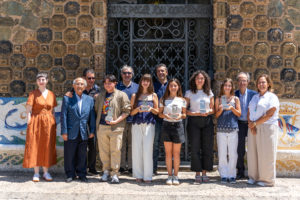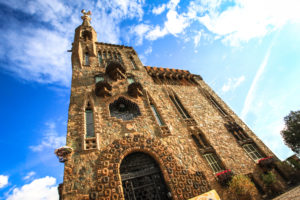By: Ferran Garcés
The name of Martin is one of the most important in the history of Bellesguard. It is the name of the king who built the palace in which, five centuries later, Antonio Gaudí was inspired to build the current tower. A strange name for a king…
No monarch of France, Portugal, England, Belgium or Hungary has this name. Nor do we see it on any tsar of Russia or emperor of Austria. In fact, the only rulers who have chosen it are Popes of the Church of Rome, though very few. Only three (1). Consequently, King Martin I is the first and only monarch to bear the name of the festivities we celebrate on November 11, with the exception of his son, Martin I the Younger, who was king of Sicily.
Even so, the choice of Martin seems most appropriate for the monarch of Bellesguard?
First of all, because his true vocation was more that of a pope than of a monarch. In his time, in fact, he was nicknamed the “Ecclesiastic”, because Martin I was a great collector of relics and religious books, as well as a restorer of churches and monasteries. Among his best friends were two important religious figures who visited him in Bellesguard: a pope, Benedict XIII, better known as “Papa Luna”, and a saint, Saint Vicenç Ferrer.
Secondly, because, although the name Martin is related to Mars, the Roman god of war, the feast of St. Martin alludes to different traditions of solidarity, and Martin I, also known as “the Human”, was a person of clement and gentle character. In Asturias, the feast of St. Martin of Tours is even called the Feast of the Humanitarians. When does this tradition begin?…
It dates back to the 4th century BC. The legend tells of a Roman legionary born in present-day Hungary who soon converted to Christianity. It was a night in which it was very cold. On the way out of a city, the soldier saw a homeless man half naked and shivering. Without hesitation, he shared with him half of his cloak, after cutting it into two pieces with his sword. The next day, or that very night, Martin received a visit from Christ and consecrated himself in the ecclesiastical life. In 372 he was even chosen bishop of Tours, a French city, where he was buried on November 11, the origin of his feast day.
Known for this and other good works, the cult of St. Martin was one of the most popular during the middle ages. Proof of this is that the word chapel comes from the place where the relic of his cape (a “cappella” or short cape) was kept.
On the other hand, as the festivity is situated in the middle of the autumn rains and the first cold of winter, the day of St. Martin was the day chosen for the slaughter of the pig. This is the origin of the famous expression: “every pig has its own San Martín”. A stretch of the calendar that, as is well known, is used to make milder days. A phenomenon that, at the time, was explained as a miracle. It was God’s reward for the saint’s generosity and the origin of two other well-known sayings: ”the Arch of Saint Martin” and ”Estiuet of Saint Martin” (2).
In Catalonia, the cult of this ancient Roman legionary is so deeply rooted that it is said that he is the saint with the most chapels and parishes. Some thirty municipalities have him as their patron saint, there are many places called “Saint Martin of…” and not least, Barcelona was the seat of Bellesguard, the last castle of the only monarch named Martin!
Bibliography
1. Pope Martin I lived in the 7th century and was the last pontiff to be recognized as a martyr. Only two more popes complete the list: Martin IV and Martin V, the numbering of which could lead to confusion. Among these three popes there were two who, for a time, were believed to have been named Martin II and Martin III, but this belief was false. Their real names were Marin I and Marin II.
2. There are different versions that explain the traditional bonanza of the feast of St. Martin. Here you can consult two of them, typical of Catalan folklore: “Origen del estiuet de San Martín”, in the web of Rodamots.cat.




